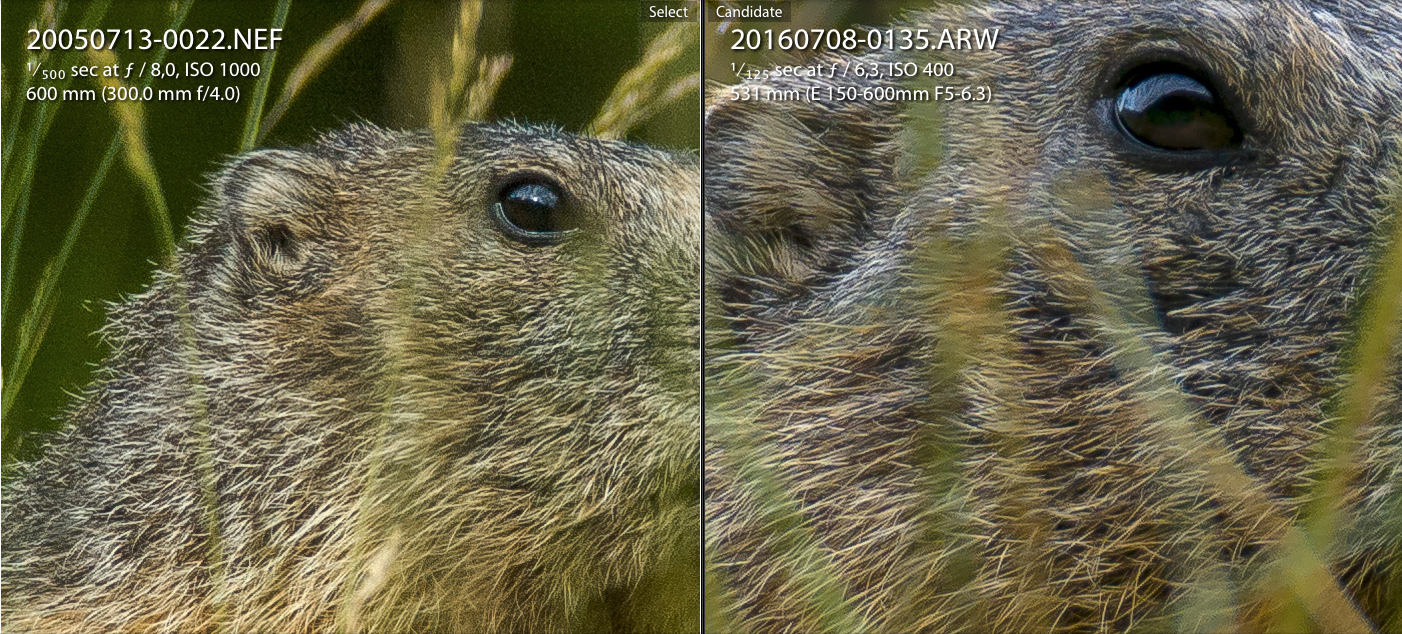I've been away from wildlife photography for about two years, since when I switched to the mirrorless system. I still have the old Nikon D7000 and the 300mm ƒ/4, but frankly I've been totally unwilling to handle a large camera any longer. And I also can't stand an OVF any longer. But now I'm back into the game thanks to the Sigma 150-600mm ƒ/5-6.3 DG OS HSM C. After having tried it for the landscape — and loving it — a few days in the Alps gave me a couple of opportunities to get into close contact with wildlife.
Sony α6000 + Sigma 150-600mm ƒ/5-6.3 DG OS HSM C @ 313 mm, 1/125 sec @ ƒ/6.3, +0.70 EV, ISO 400, precariously leaning on the passenger seat.
Le chevreuil curieux (Capreolus capreolus).
Sony α6000 + Sigma 150-600mm ƒ/5-6.3 DG OS HSM C @ 531 mm, 1/125 sec @ ƒ/6.3, +0.70 EV, ISO 400, bean bag from the car.
Marmotte des Alpes (Marmota marmota).
What about the quality? I didn't run yet a test in controlled conditions about the sharpness of the new lens compared to the old Nikkor 300mm ƒ/4. Given that one of the latest subject was a marmot, I went and compared a similar shot taken in the past with the 300mm + 2x extender. The old photo was much better for the composition and took advantage of better light; the placement of the subject, at the border of a slope, made for a better separation from the background. But here I'm just interested in a rough comparation of the achieved sharpness, both for the IQ of the lens and my capability of getting an unblurred shot.
Nikon D70 + Nikkor 300mm ƒ/4D ED-IF AF-S @ 600 mm, 1/500 sec @ ƒ/8, ISO 1000.
Marmotta (Marmota marmota).
It's quite clear that there's the same amount of sharpness at pixel level — but the old photo was taken with a 6MP Nikon D70, the new one with a 24MP Sony α6000. That's twice the linear resolution (I recall that I stopped using the 2x teleconverter when I upgraded to more recent Nikon bodies, because it was unable to resolve enough for their higher pixel count). Furthermore, the stabilisation allowed me to use a longer shutter time and lower ISO, therefore a better noise figure.
So, I'm definitely back in the wildlife game, with even improved quality. At least for static subjects...






